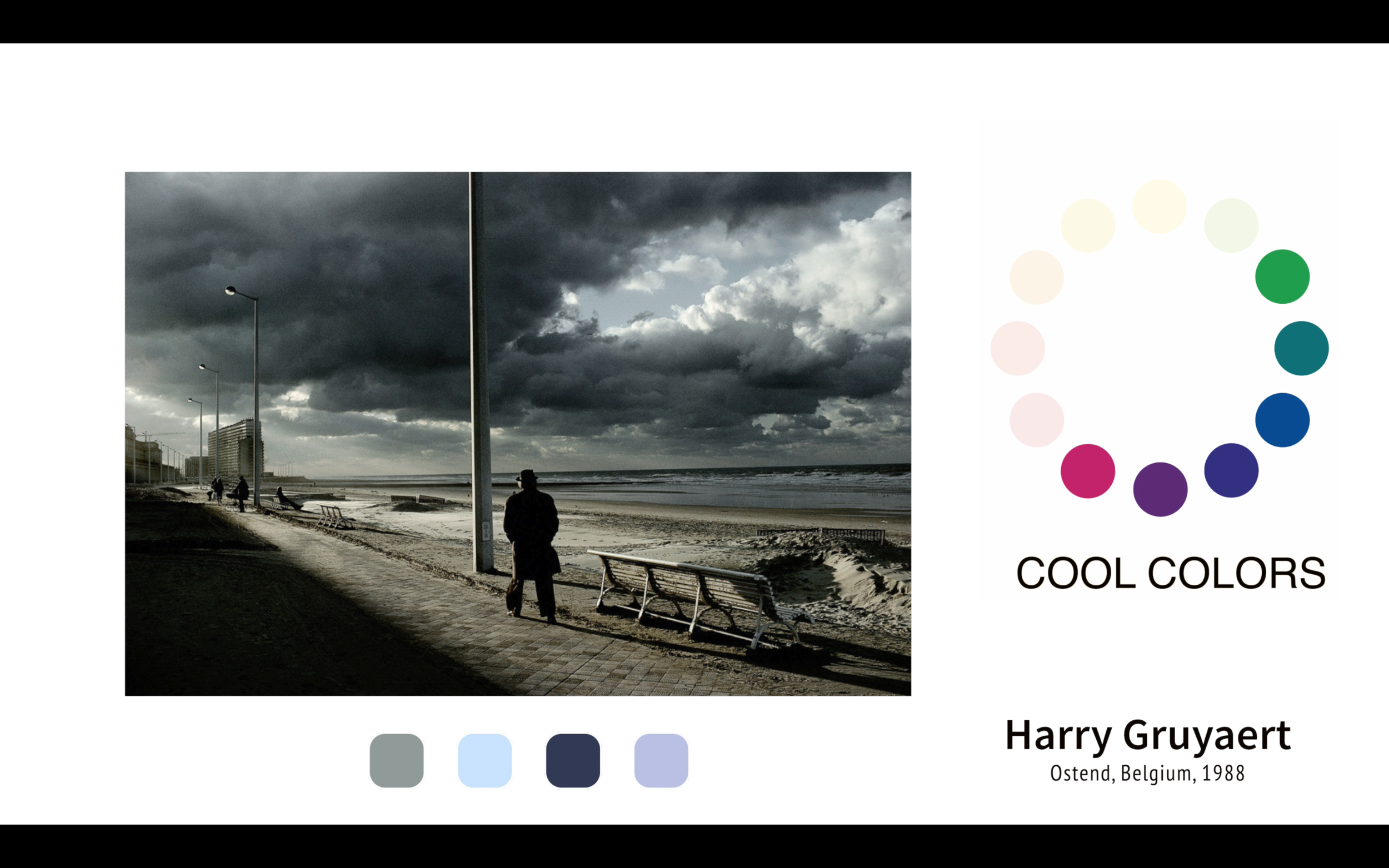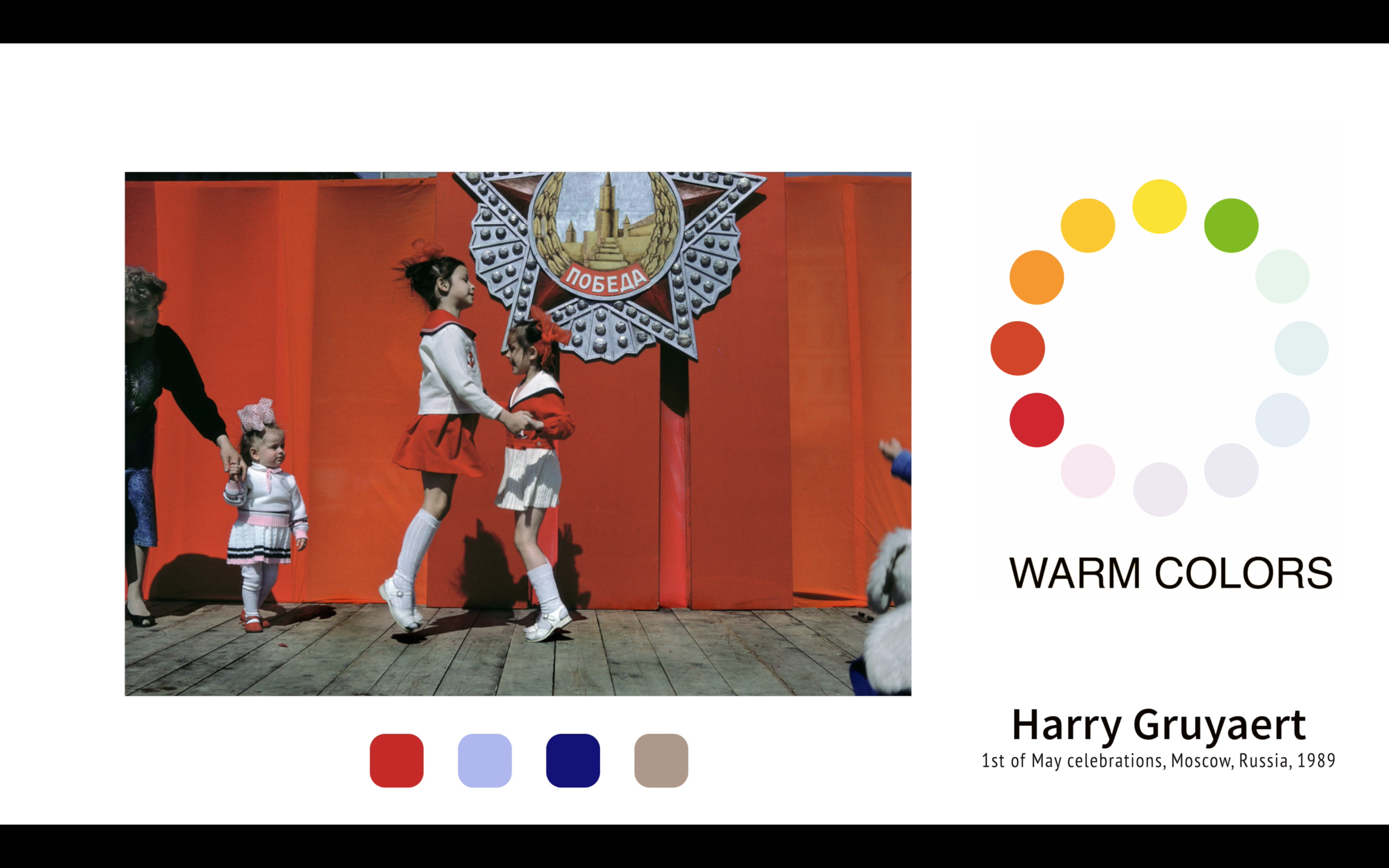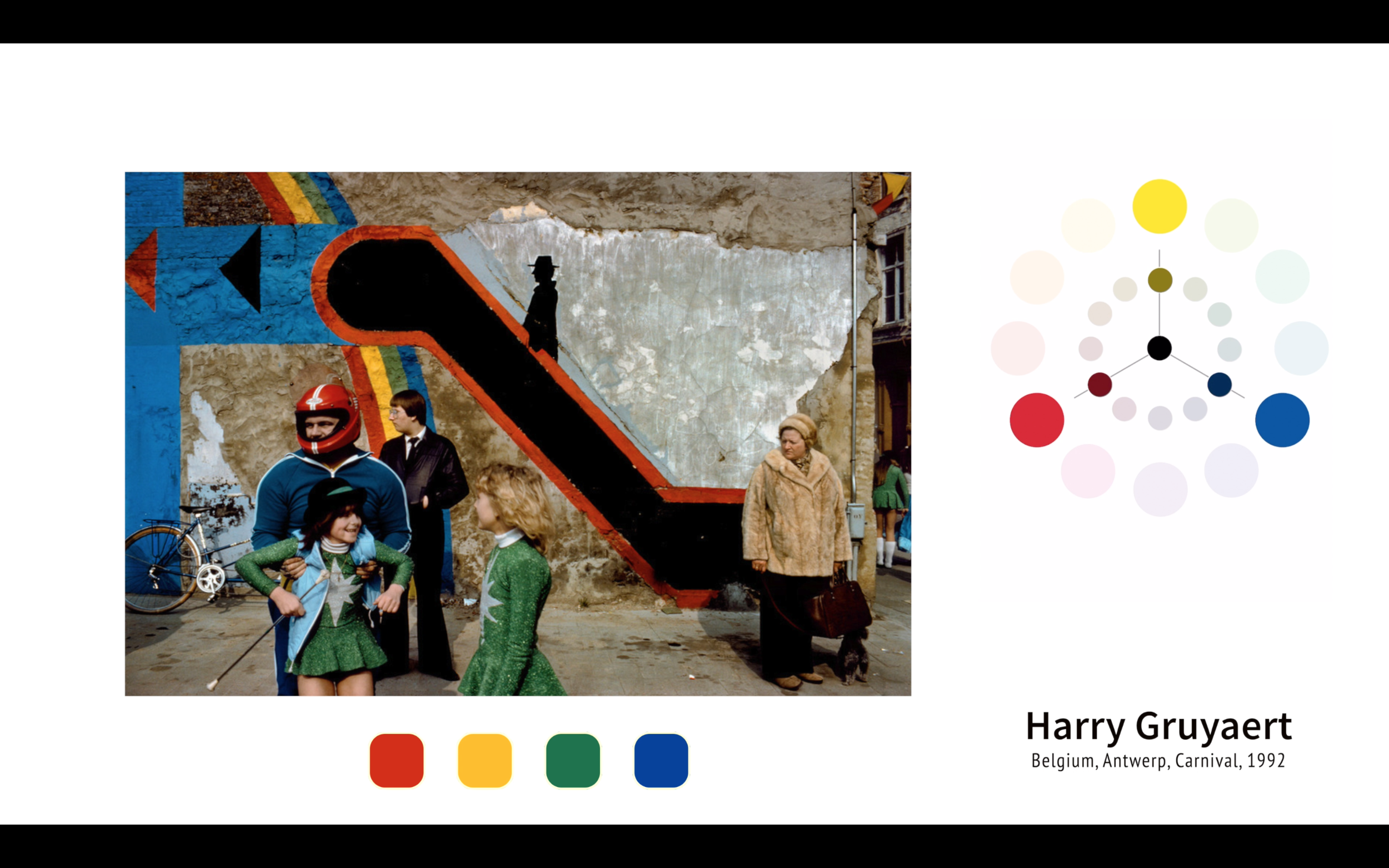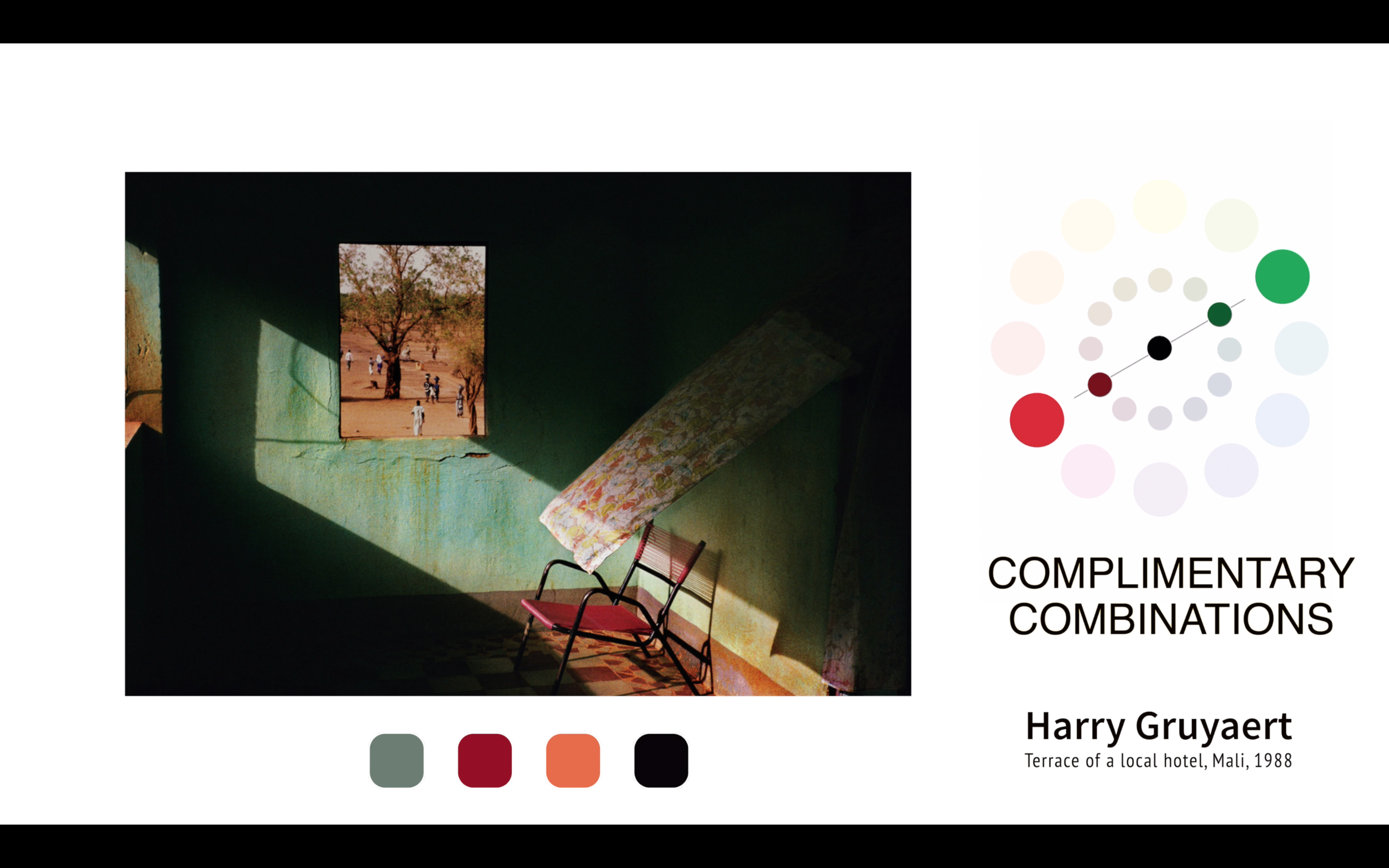How Harry Gruyaert Makes You Fall In Love with Color Photograph
We can probably all agree that this current situation we live in at the moment is not the best time for creating art as a street (or even documentary) photographer. How can you want to take photographs outside when you are stuck inside? But, what if I told you about a photographer who spent weeks in his room only with his camera, an old TV and an idea. An idea that later became a part of his portfolio, which helped him to join Magnum Photos, one of the most acclaimed and well known photographic cooperative. Harry Gruyaert has been one of my favorite color photographers for a long time. His life and work really makes you love color photography, but also helps you to decide when to think outside of the box and when to stay in.
Harry Gruyaert was born in Belgium in 1941. His father was a teacher of technical photography and Gruyaert himself studied at the School of Film and Photography. Do you remember that one job you had always wanted to do as a child? I mean, before I wanted to become a photographer, I wanted to become a garbage-collector, which is probably not an ideal point on the life trajectory to become world known photographer right? It seems like Harry Gruyaert got a grasp on his life mission little sooner. Actually, right from the start, Gruyaert wanted to become a photographer and nothing else. I haven’t realized how much we have in common until I found out that his father, just like mine, discouraged him from pursuing the child’s dream profession.
His father didn’t want him to become a professional photographer as he thought it was not a serious profession. However, photography and cinema were the only professions Gruyaert was ever interested in. He was determined to leave Belgium as soon as he could, and so he did in 1962. He left for Paris and met Robert Delpire, who got him to work in publicity and fashion. Gruyaert also worked as a freelance director of photography for Flemish television between 1963 and 1967. As time passed by, Gruyaert realized he was more interested in setting up the scene than clothing. In 1969 he went to Morocco, and when he arrived there he fell in love with the country. The light and the colors he saw there made him lover color photography. He realized he doesn’t want to approach his photography only as a work just to deliver for magazines. He didn’t want to be restricted by the lay-out or the assignments but wanted to build something that would last longer.
But you know, producing art alone will not pay your bills and as they say, photographers also need to eat something. But if something is your passion, there is always a way. For some years Gruyaert also did other work to be able to leave with his Volkswagen minivan for a month every year and sleep in the minivan to develop a more in-depth connection with the place.
Even though I think it is your goal as a photographer to be able to make common things look interesting, which is a feeling I get when I, for example, look at the photographs by Martin Parr, Gruyaert’s inspiration was definitely traveling.
“The most difficult thing is to make photos where you live, because you start to find things normal. For my very long work about Belgium I had the advantage traveling back and forth. I realized that I often made my best photos in the beginning. After a while you start to think everything is normal“. - Harry Gruyaert
When you look at Gruyaert’s portfolio it is obvious he doesn’t’t focus on one particular style. You can find there landscapes, street photographs as well as “screen shots” of old TV. I realize we often lock ourselves in a box when it comes to photography, which limits our creativity. Gruyaert does not usually work with a concept in mind.
“I often express better my love and my passion for life through my images. I work by passion, passion for colors, for chroma, a place, a person, a landscape, for all. It’s a question of encounters between me and situation, certain lights, certain people, certain architecture, I need passion. I need to love what I see, to be excited by what I see.” - Harry Gruyaert
In 1981 Gruyaert joined Magnum Photos. It was the first time they accepted someone from an art background. I would say he fits there perfectly. But some Magnum members even argued it would be the end of Magnum if Gruyaert was accepted since Magnum was very journalistic at that time. I think maybe his photos kind of feel like if Henri Cartier-Bresson shot in colors. It is true that Gruyaert frames in color like no-one else.
What I think makes a good photographer and what I like about Gruyaert’s style is his urge to photograph. He really needed to stop and photograph when he spotted something interesting, which also made him a little difficult to travel with. He worked really fast when shooting and much slower when editing, which is something I can easily relate to.
“I am a photographer, but I think of photography like therapy. It’s something I need to do. If I don’t take pictures a month, I really miss it. Its relationship to the world I need…. Photography that matters most to me comes from this urgent personal need” - Harry Gruyaert
Now, you might be wondering, is there a specific reason to shoot color over black and white? I think there is. There is actually one thing that the color really helps to express and that is a mood. Mood can be expressed based on a photo’s color scheme. Like, cold tones can elicit feelings of sadness or loneliness, while warmer tones might suggest tenderness or joy. Colour is a powerful mood changer.
So, how does Gruyaert use the colors in his photography? A lot of his photographs consist of the three primary colors: red, blue and yellow. He often uses two of them or all of them with muted background which allows them to pop, and even though there is no light that is alien to him, his use of the hard light is amazing. The pure blacks you often find in his photographs give the color nice contrast. Other than that he also often uses simultaneous contrast when using complimentary colors which is naturally pleasing for the eyes. He also shoots some monochromatic and, I would say, “almost monochromatic” images, which behave little like black and white photos and force the viewer to focus on details of the image. But my most favorite are his analogous-scheme images. They are easy on the eyes, and have peaceful and comfortable mood. I find some of his photos even looking like paintings.





But, here comes my dilemma. I don’t know about you but I am often struggling to define what actually my photography style is. I see beautiful black and white photographs and suddenly I want to be a black and white photographer. I see a nice color photograph and suddenly I am thinking about if I am not missing out on something.
The technical part of photography has become much easier over the years. Gone are the days you had to commit your photography to one particular film, color or black and white with a specific ISO. When you shoot color photographs you can always convert them into black and white and you can even shoot JPEG together with RAW at once. I think it is awesome how technology makes our lives easier. But is the possibility of multiple choices and outcomes actually liberating or limiting? There is a study that shows that the more options people have, the more dissatisfied they are in the end with their choice, as opposed to someone whose choices were very limiting. Even though that is not what people think. I have been shooting JPEG + RAW for a number of years and I always thought how universal it was. But shooting color and black and white are actually two different things.
“As a color photographer, color has to be really very important, I mean I have been in relation to black and white which I have more direct relation to the people I photograph. Once I had been working in very colorful places like Morocco, India etc. If you work in color you have to compose differently. If you shoot in color it has to be the first thing. Work in color is much more complex and often more difficult as well than black and white. Black and white is beautiful but I find it less complex. To me color is more physical, color is more the senses and black and white is more brain.” - Harry Gruyaert
However, there is a fine line between being spread a little too thin and focusing on one particular section you are trying to train and improve. When I go out shooting, I often chose a particular composition technique thatI try to focus on most and color photography is no different.
I think the key element to take from Gruyaert’s work is his passion and love for photography. I really believe those are the elements that makes you not only a great photographer but great in whatever you do. I don’t think we have to necessarily limit ourselves to one particular style of photography. But, it is important not to be overwhelmed by all the possibilities your camera can offer you. Focus on one thing you want to improve slowly, but surely. And maybe you, just like me, will realize that sometimes, less is more. Thank you for watching.
If you're interested in learning more, check out this book: "Harry Gruyaert" is the first retrospective of the pioneering work of Harry Gruyaert. Gruyaert revolutionized creative and experimental uses of color in the 1970s and 1980s. His emotive, non-narrative, and boldly graphic way of perceiving the world influenced both cinema and American photographers. This volume provides a superb overview of Gruyaert's personal quest for freedom of expression and the liberation of the senses, featuring 80 color illustrations.

